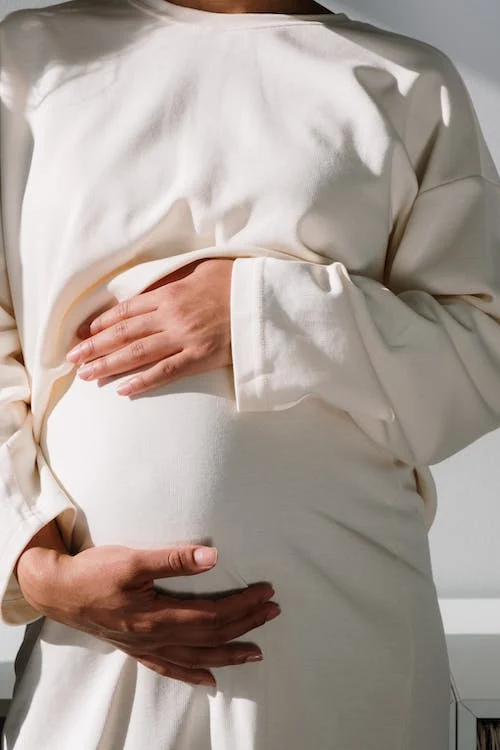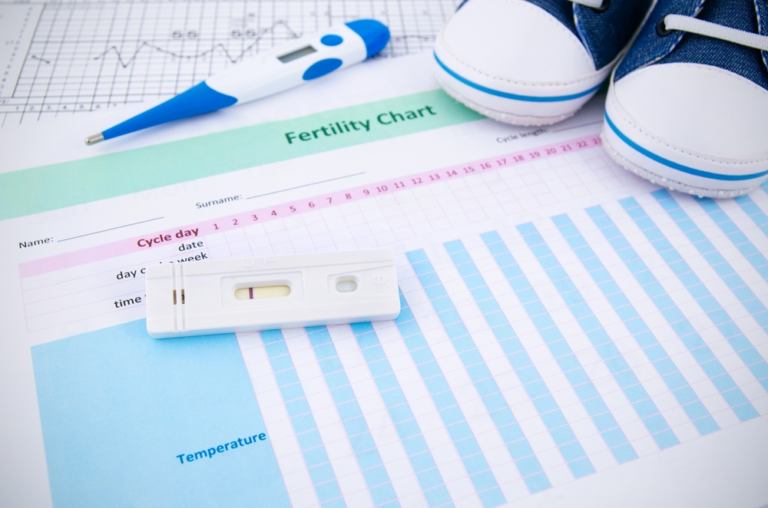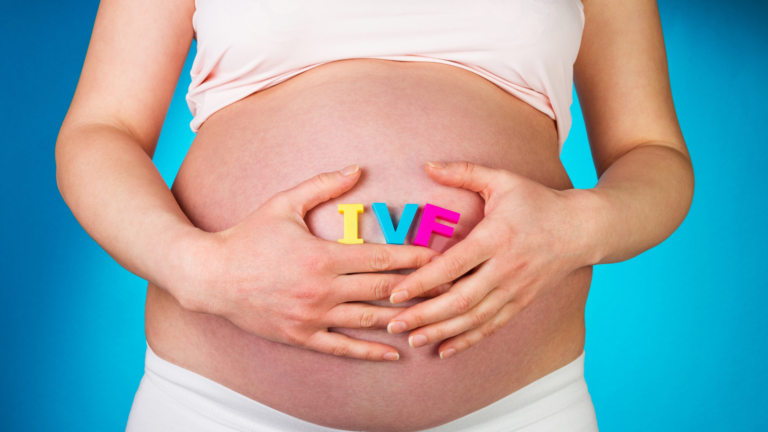The Impact of Age on Female Fertility
One most important factor affecting the fertility of a woman is age. For several reasons, including career goals, women in the present society, women prefer to wait till their thirties to begin having babies. This is becoming a common thing in our current society.
Women now in the present day look healthier suggesting better care of their health. Although the chances of being pregnant and birthing a healthy baby are increased with good health, however, good health does not affect the effects the age of a woman has on fertility. As a woman advances in age, there is a change in fertility. After puberty, both females and males in their teens become fertile. As a woman advances in age, the reproduction potential reduces. The ovulation and menstruation onset marks the beginning of the reproductive years in females. A woman becomes unable to become pregnant after menopause.
For a woman between her late teens and late twenties, that’s when her reproductive years are at the peak. Fertility begins to decline when she reaches age thirty. In the mid-thirties, the decline is rapid, and by age forty-five, the probability of getting pregnant naturally becomes very unlikely because fertility would have declined so much. This decline in fertility is a result of a reduction in the number of eggs in the ovaries as a woman advances in age. One may not observe these changes however these changes occur faster than one would think.
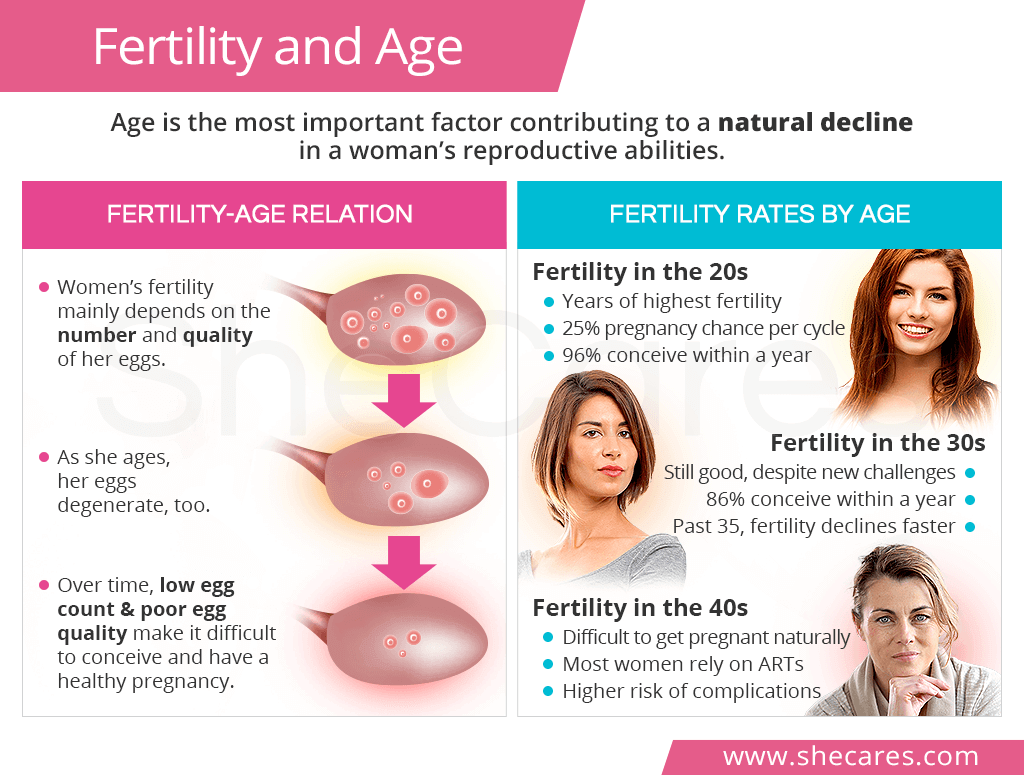
The Menstrual Cycle
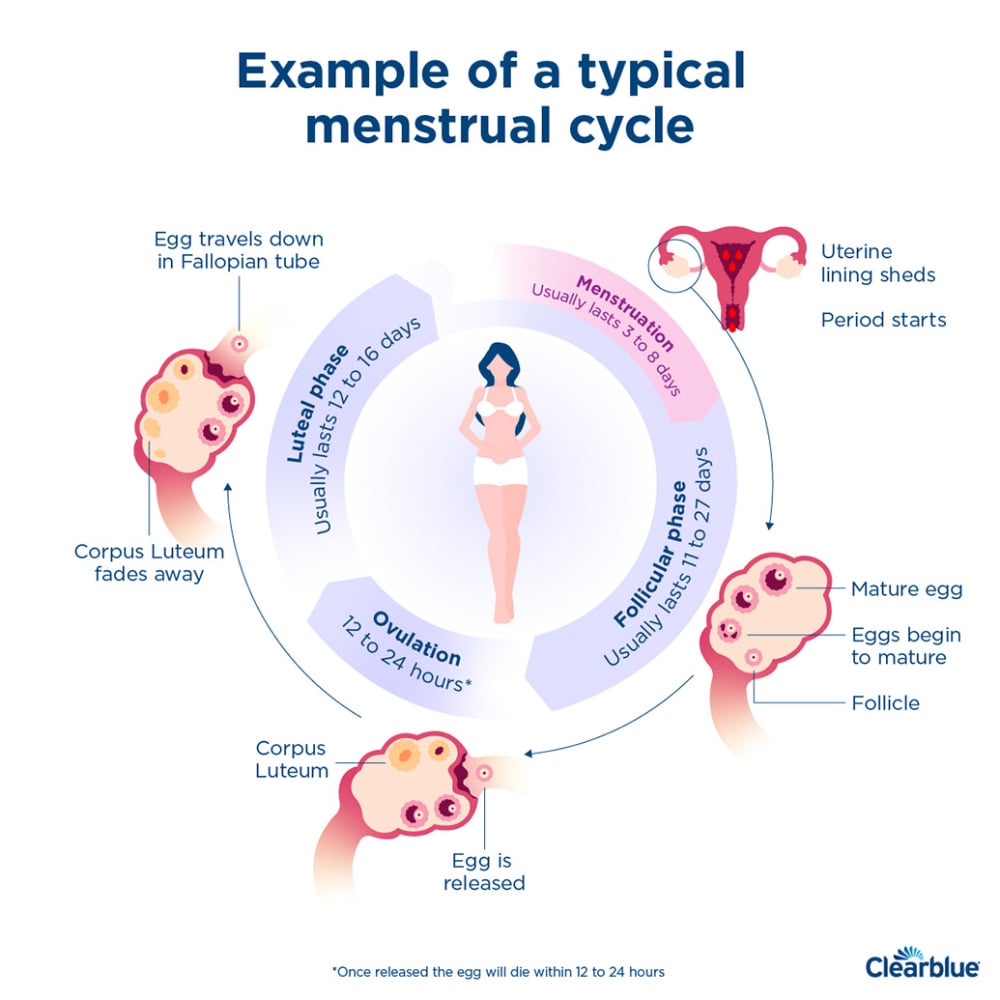
The menstrual cycle comprises four phases which include
Menstrual phase
This is usually the first stage which is when your period starts. In this phase, the lining of the uterus, which is already thickened in preparation for pregnancy, will shed off through the vagina if pregnancy has not happened yet. The level of hormones that is estrogen and progesterone will drop since there is no pregnancy.
Follicular phase
This begins with the release of the follicle-stimulating hormone (FSH) causing the ovaries to be stimulated. This stimulation will cause the ovaries to produce about 5 to 20 follicles (which are small sacs). The follicles produce will each contain an egg that is not matured. During this phase, a matured egg will be formed by one of the follicles, although in some cases, two matured eggs will be formed. The body will reabsorb the remaining follicles. This phase usually begins from day six to day 14 of the menstrual cycle. During this phase, there is a rise in the level of estrogen hormone causing the lining of the uterus to thicken.
Ovulation phase
The ovulation phase starts when the pituitary gland is triggered to cause the release of the luteinizing hormone (LH). This trigger is caused by the surge in estrogen levels during the follicular phase. During ovulation, the ovary will release a mature egg which goes to the uterus through the fallopian tubes for fertilization by the sperm. The egg upon being released has only 24 hours to survive. Once every month, ovulation will happen, and this lasts from 16 to 32 hours and happens two weeks before the next period. During this period one pregnancy can occur.
Luteal Phase
In this phase, the corpus luteum is formed which will cause hormones such as progesterone and some estrogen to be released. The corpus luteum is formed from the follicle after releasing the egg. The hormonal rise will help to keep the lining of the uterus thick and prepared for the implantation of a fertilized egg. The level of these hormones will drop if pregnancy is not achieved, and the body will reabsorb the corpus luteum which would have shrunk. But if pregnancy should occur, human chorionic gonadotropin (hCG) will be produced which helps to keep the lining of the uterus thick. The decrease in the hormonal level will cause a period to occur and the lining of the uterus will be shed off during the period.
What happens as a woman ages?
During early adolescence, the menstrual cycle is usually irregular due to the irregularity of the ovulation. The menstrual cycle becomes regular at age 16 because the ovulation has become regular. The regularity of the menstrual cycle which is between 26 to 35 days period tends to shorten between the late thirties of age and early forties. With advancing age, there will be missed periods till there is a cessation of the period. The woman is said to be menopausal if for one year she has had no periods.
There are a fixed number of eggs in the ovaries when a female is born. As a female gets older, there is a reduction in the number of eggs considering changes that will happen with the ovaries due to age advancement. There is also a possibility that as you grow older, a girl child can develop health conditions such as fibroids that can affect fertility, unlike men who continually produce sperm throughout their lifespan. The number of these follicles drops as a woman ages. The follicles of about one million in which a female is born will drop to about 300,000 follicles at puberty and of this number, during the reproductive years, during ovulation only over 300 will be ovulated. The rest of the unused follicles will undergo a process known as atresia which is a degenerative process that happens irrespective of normal menstrual periods, pregnancy, or birth control usage.
The chances of being pregnant monthly in a woman’s early to mid-twenties are between twenty-five to thirty percent. As from the early thirties, the probability of getting pregnant reduces, and by age forty, for any monthly cycle, the chance of being pregnant goes to five percent.
The effect of increasing maternal age on the quality and quantity of eggs
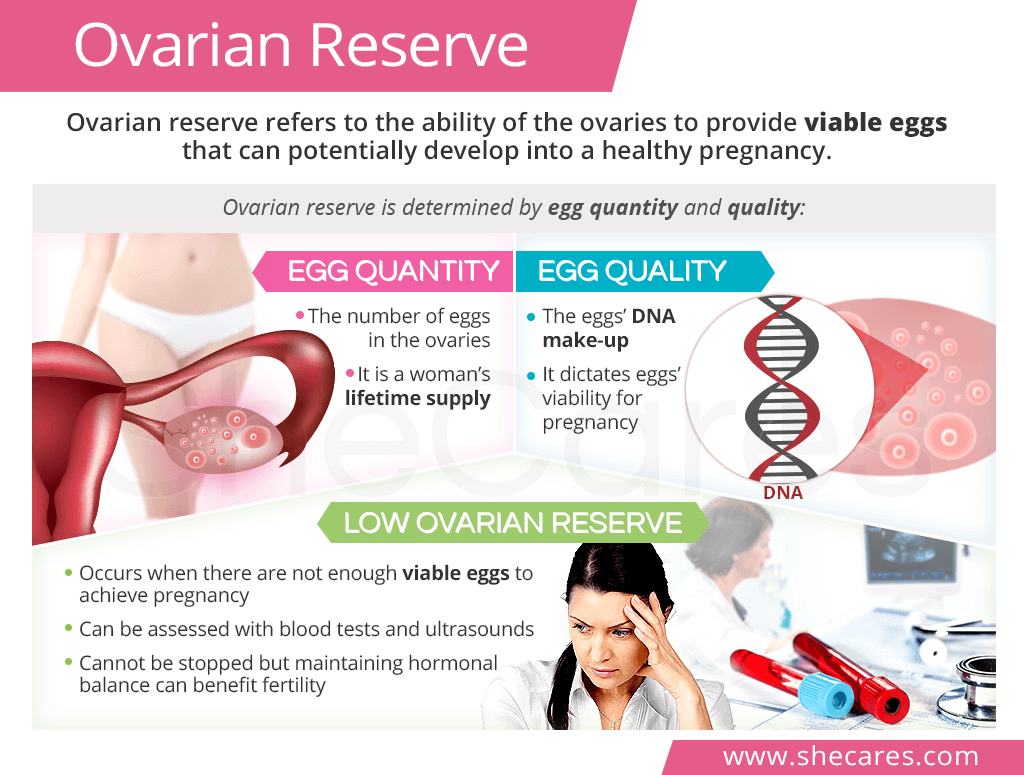
There are a total of 46 chromosomes in each cell of the body, that is, 23 pairs of chromosomes. When an error happens with the number of chromosomes in the cell, this is known as Aneuploidy. This has to do with changes occurring in the quality of the eggs that have to do with genetic abnormalities.
Aneuploidies happen when there are more or fewer chromosomes if fertilization happens. Instead of the normal 46 chromosomes (23 chromosomes each from the egg of a woman and the sperm of a man), the embryo will have few or more. It is estimated that aneuploidies would be seen in roughly forty percent of eggs by age 35 years causing the formation of embryos to be impaired. Aneuploidies occur in the oocytes because increasing maternal age will cause the cell division process to be impaired leading to errors in the chromosomal segregation. An example is those with Down syndrome, as the embryo has an extra chromosome 21. However, with such abnormal embryos, pregnancy may not occur or they are miscarried.
As a woman advances in age, there is a reduction in the inbuilt reservoir of oocytes or eggs. Unlike men who produce new sperm daily, there are a definite number of eggs in the ovary that a woman is born with. While still a fetus in the womb, a woman’s eggs are at the highest, up to seven million, but it becomes about one to two million at the time of birth. At menarche, which is the first mensuration, it has dropped to about 300,000 to 500,000 eggs. For every monthly period, she would ovulate one or two follicles. By the time she reaches menopause which happens at an average age of 51 years, the woman has released all her eggs. That is the reason a woman stops seeing her menstruation when she gets to menopause, that is, she has passed the childbearing age.
As the woman advances in age, the quantity of eggs in the ovaries reduces, and this is known as loss of ovarian reserve. The follicles will become more insensitive to the stimulation of FSH, and as such more stimulation will be needed for the maturity and ovulation of an egg as the ovarian reserves declines. Initially, there will be shorter menstrual cycles, 21 to 25 days apart. With time, the cycles become long and irregular due to the inability of the follicles to be stimulated to cause ovulation. The diminished ovarian reserve is related to age. However, it can happen to young women due to factors like a family history of premature menopause, smoking, or prior ovarian surgery, or there may be no known risk factors.
The ovarian reserve will tell the ability of a woman’s ovaries to provide eggs that are viable and would produce a pregnancy that is successful and healthy. There some blood tests can be used to check the ovarian reserve although these tests do not determine if pregnancy can occur or not. These tests check that changes have begun on the ovaries due to age advancement. In the same age group, those who have a normal ovarian reserve are more likely to get pregnant than those who have a poor ovarian reserve. Tests like AMH (Anti-mullerian hormone) on any day of your menstrual cycle or a combination of FSH (Follicle Stimulating hormone) and estradiol on menstrual cycle days 2, 3, or 4 can be used to check the ovarian reserve.
The information provided in this blog is for educational purposes only and should not be considered as medical advice. It is not intended to replace professional medical consultation, diagnosis, or treatment. Always consult with a qualified healthcare provider before making any decisions regarding your health. Read more

